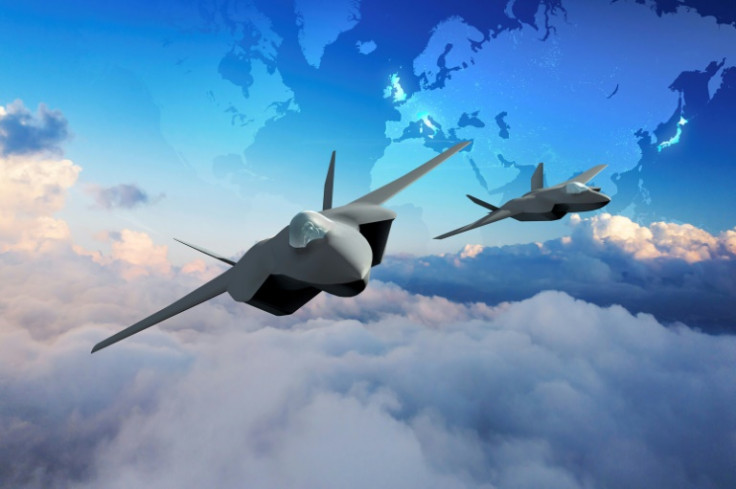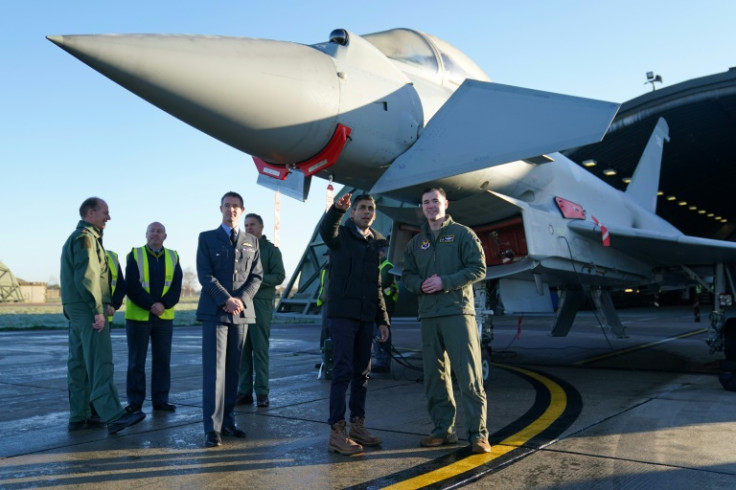Japan, UK, Italy to develop next-generation fighter jet
Britain, Italy and Japan said Friday they will jointly develop a future fighter jet in a project that UK Prime Minister Rishi Sunak said would guarantee national security and safeguard thousands of jobs.

Britain, Italy and Japan said Friday they will jointly develop a future fighter jet in a project that UK Prime Minister Rishi Sunak said would guarantee national security and safeguard thousands of jobs.
The three nations held out the prospect of cooperation with European and US allies, which are developing their own "sixth-generation" planes, vowing to maintain "interoperability" among all the allies against threats from the likes of China and Russia.
The new "Global Combat Air Programme" is slated to produce its first jets by 2035, merging the three nations' costly existing research into new aerial war technology, from stealth capacity to high-tech sensors.
"We're one of the few countries in the world that has the capability to build technologically advanced fighter aircraft," Sunak told reporters on a visit to a Royal Air Force base in eastern England.
"That's important because it means we can keep the country safe from the new threats that we face," he said.
"It also adds billions to our economy and supports tens of thousands of jobs across the country. But it's also good for our international reputation."
The announcement was accompanied by a set of images showing an artist's impression of the sleek new jets flying past Mount Fuji and over London and Rome.
In a joint statement, the three countries said the project would "accelerate our advanced military capability and technological advantage" at a time when "threats and aggression are increasing" worldwide.
The objective is to develop by 2035 a twin-engine stealth aircraft that could be operated with or without a crew, that would be impervious to radar and boast features such as laser-directed weapons and a virtual cockpit.
For the current "fifth generation" of fighters, the three nations are relying on US-made F-35s.
But officials in Tokyo stressed that Japan was not turning its back on its close military alliance with Washington.
In a separate joint statement with Japan's defence ministry, the US Department of Defense said it supported the project.
"We have begun important collaboration through a series of discussions on autonomous systems capabilities, which could complement Japan's next fighter programme among other platforms," the US-Japan statement said.
For Britain and Italy, the new jet codenamed Tempest would replace the Eurofighter Typhoon developed with other European allies including Germany and Spain.
For the next generation, Germany and Spain have joined France in their own project, while the United States has separate plans in development, as do China and Russia.
Japan's prior project to build a next-generation fighter plane, named F-X, was reportedly expected to cost more than five trillion yen (around $40 billion).
Friday's announcement comes with Tokyo poised to make the largest overhaul to its security strategy in decades.
The government plans to ramp up defence spending -- a controversial move in a nation whose constitution limits military capacity to ostensibly self-protective measures.
But the war in Ukraine, repeated missile launches from North Korea and growing pressure from China have helped build support for a bigger budget.
Japan's Nikkei business daily said that companies Mitsubishi Heavy Industries, BAE Systems and Leonardo would oversee the new project, which is Tokyo's second joint development after its SM-3 missile made with Washington.
Other companies expected to be in the mix are British jet maker Rolls-Royce, Italy's Avio Aero and IHI Corp. of Japan.
The Global Combat Air Programme is the latest high-profile example of allied countries collaborating on an ad-hoc basis to develop defence equipment.
Such moves proved controversial last year when the United States snatched a lucrative contract to supply Australia with submarines from France and launched a new US-UK-Australia alliance in the Pacific, dubbed AUKUS.
After a meeting between US and Australian ministers this week in Washington, the two countries said they would welcome Japanese troops into three-way rotations, vowing a united front in the face of China's rapid military advances.

© Copyright AFP 2025. All rights reserved.




















